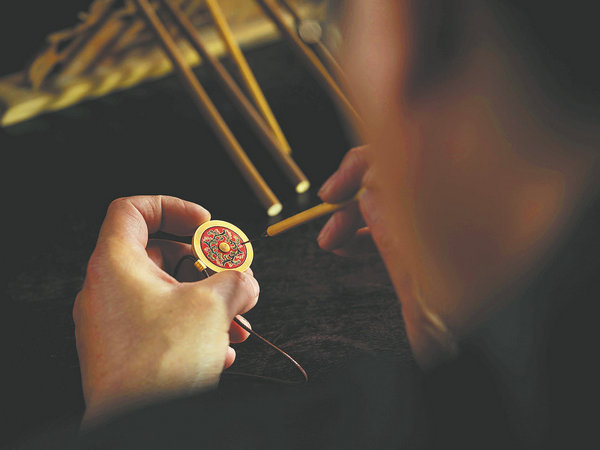

The eight imperial handicrafts have been highly regarded and favored since the imperial court of the Qing Dynasty (1644-1911), and cover embroidery, gold lacquer and filigree inlaying, cloisonne, ivory, jade and lacquer carving. They are known for their exquisite craftsmanship, intricate designs and association with the imperial culture.
Intangible cultural heritage can help modern brands enrich cultural cache and how they are perceived in the market, as well as reach a wider demographic — promoting cultural heritage in the process — Bai says.
He adds that the cooperation has produced positive results in promoting the country's intangible cultural heritage and a domestic fashion brand, and is a good exploration of innovative development of related industries.
"In fact, many masters are experts in a particular field, and their skills and design styles are highly refined within their domain. But, if they venture into the realm of fashion design, adaptation and effective communication between related parties are indispensable," Bai says.
The cooperation has facilitated better understanding between the museum's senior artists and the brand's designers.
"Young designers of Mokingran have developed a deeper understanding of traditional intangible cultural heritage, palace craftsmanship and the artisan spirit," Bai says. "For our senior masters, they have acquired an insight into current fashion and contemporary trends, such as the underlying philosophy embraced by today's youth."
Bai adds that the challenge lies in how to merge the traditional and the fashionable and translate that into tangible designs.
For example, how to blend the royal and prestigious display of cloisonne with the simple and vibrant style preferred by young consumers was addressed after intense communication between the brand's designers and the Beijing museum's national cloisonne inheritor, Mi Zhenxiong.